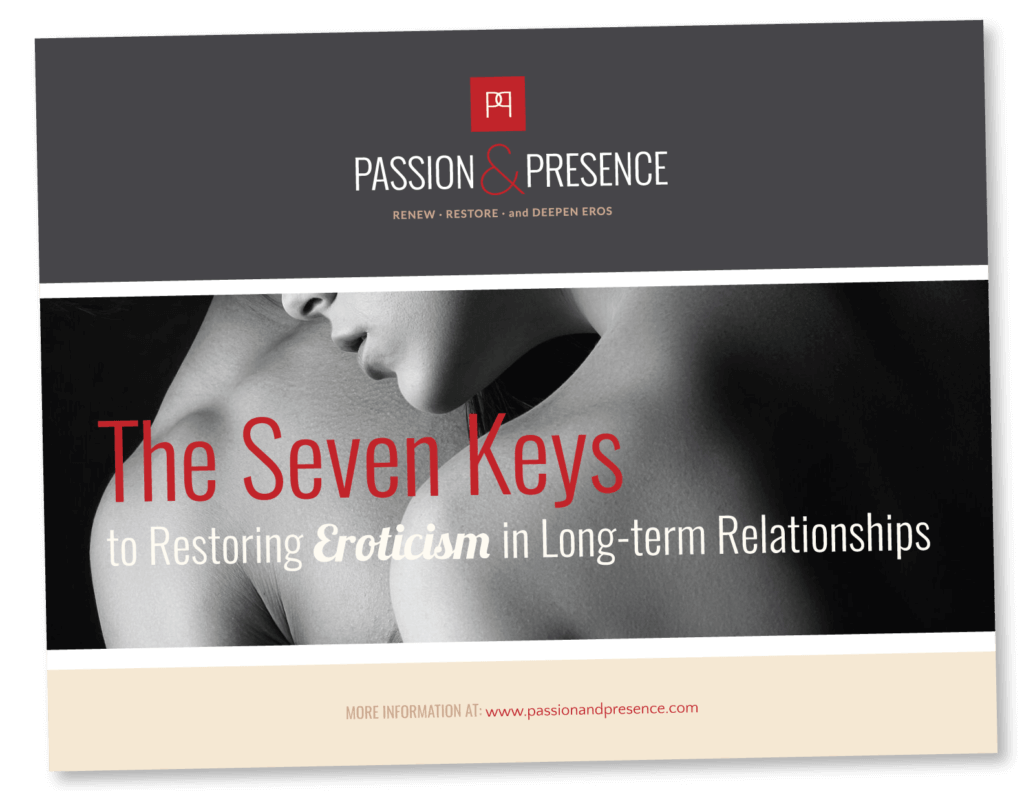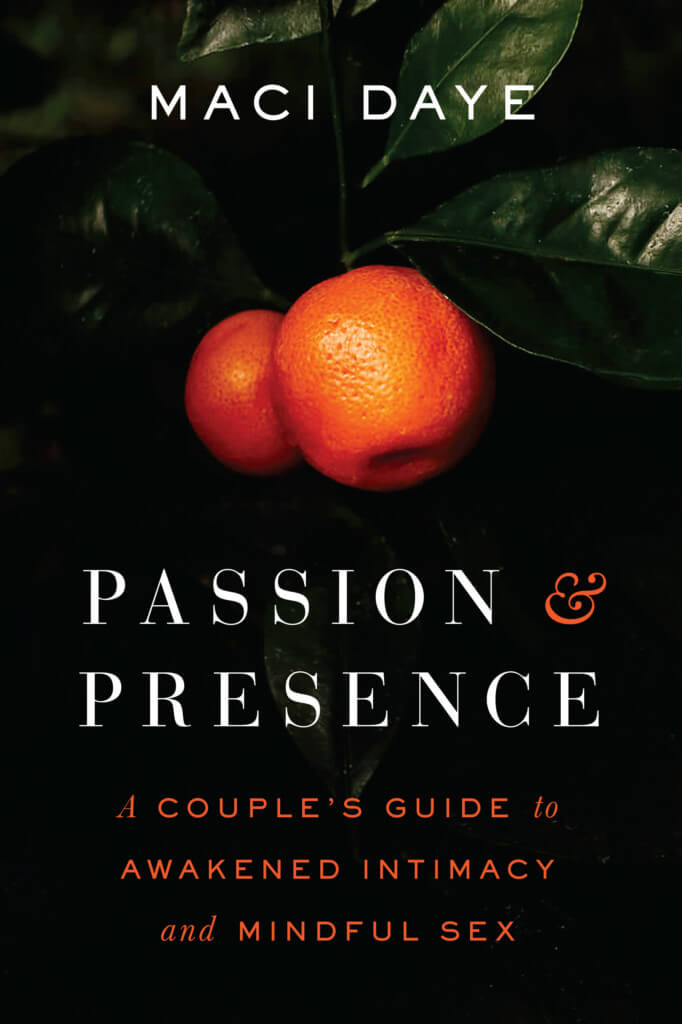By Karen Baikie, Ph.D
Rachel stirs in bed as she hears a familiar noise. Then, with a start, she’s sitting up. The clock says 2:19 am. Glancing over at her husband Craig, who is sound asleep, she raises her eyes to the ceiling, slips out of bed, and makes her way down the corridor towards the noise. Her four-year-old son Joe is sitting on his bed. Alarmed, she knows that his cries could quickly escalate into screams that will surely wake his older sister in the bed next to him – not to mention the next-door neighbors. In a manner that suggests she has the situation under control, Rachel speaks gently to Joe and gets him back to sleep. She makes her way back to the bedroom, quietly praying that it’s the last time for the night so that she can get at least a few hours of solid sleep before that crucial Board meeting at 10:00 am tomorrow. Rachel is completely exhausted. For the third time tonight, Rachel has rushed out of bed to attend to Joe. It is the umpteenth time this week. As she gingerly creeps into bed, Craig rolls over and says, “Is he ok?”
At the realization that Craig was awake all along, Rachel’s entire body stiffens, her jaw locks, and a steely expression comes over her face. Her eyes narrow, her breath becomes shallow, and her heart rate increases. As she angrily pulls the covers up over her, she hisses, “That’s NOT cool,” and tightens her body into a ball as she pretends to be going back to sleep. In turn, Craig’s chest puffs up in anger as incredulity spreads over his face. His voice is harsh when he says, “How dare you? I’m trying to be supportive. What do you expect me to do?”
Rachel lashes out, “You could help, for a change!” Joe is quick to defend himself. “You had already gone. Are you expecting me to get up and come with you too?” he asks. Rachel and Craig descend into an all too familiar argument, slinging accusations and defending themselves in a vicious tirade. The complaints go back years in their marriage. It ends in the standard way, with Rachel fighting back the tears, yelling, “It was a huge mistake marrying you. I really screwed up there, didn’t I?” and Craig grabbing his pillow and the blanket on the end of the bed, carrying them down to the lounge room to sleep on the couch, yet again.
They lie awake for over an hour, churning over the events that just happened, trying to make sense of them and wondering how on earth they got here again and whether there is any way out of this vicious cycle they keep finding themselves in.
When I first met them, Craig told me, “We have many reasons to be happy, but we are not very good at making each other happy.” They have been together for nearly ten years, with two children they both adore. They both work long hours in the corporate world, averaging 50+ hours each week and often traveling overseas at short notice. Craig has never liked his job, but he feels competent at what he does and likes the boost it gives his self-esteem. Rachel loves her job. She’s well respected for her capacity to get things done and manages a hundred ‘to-do’ lists in her head (and on paper!).
The kids are doing well, excelling at school and in a variety of extracurricular activities. They have a full social life, and their friends admire them and sometimes envy the life they’ve created for themselves. But of course, things are not always as they seem on the outside. Rachel feels overwhelmed and exhausted with everything on her plate. Her boss is “a tyrant” with no kids of his own, so he doesn’t appreciate the whole work-life balance concept. She’s been sleep-deprived since Alice was born, and Joe’s issues just make that worse.
Craig hates how stressful, sterile, and ordered their life has become. He longs for the passion and spontaneity that characterized their early relationship, including their sex life, which he admits has very little life these days. No matter how hard he tries to please Rachel around the house, doing all the chores he thinks he should, it doesn’t make her happy enough to have sex with him. Rachel is too exhausted to want sex, and even if she did, Craig’s volatility and frequent outbursts don’t do anything for her desire to be intimate with him. Neither one of them wants to separate, not really. They both recognize that their relationship is worth holding on to. But neither of them can bear to continue the way they are going. It’s intolerably painful.
One of the problems facing a couple like Rachel and Craig is that they live in a ‘postmodern’ relationship. In the past, relationships came with implicit rules with clear, traditional roles. Rachel would have been the one to take care of and attend to the children, day, and night, with no expectation that Craig would have much involvement in it – and certainly no expectation that he’d be getting up at 2:19 am.
However, we live in a time where no clear agreed-upon rules exist. Everything needs to be negotiated, making navigating relationship stressors more challenging. Moreover, fairytales like Cinderella, Rapunzel, and Sleeping Beauty convey the implicit message that things always end “happily ever after.” Our culture perpetuates the myth that at some point, you’ll find your perfect match, and everything will be wonderful from then on. When our relationships feel difficult, we fall into thinking that this means something is seriously wrong or that we have made the wrong choice. The person we are with is not “the one.”
Craig often expresses his pain and disillusionment by saying, “It doesn’t matter what I do; I can never get it right; I can never do everything the way you expect. You’re ridiculous; no one can be so perfect as you.” Rachel can only make sense of how terrible she feels in the relationship by believing that he’s not the “right” person for her. Their arguments end with her saying, “I made a huge mistake marrying you.”
As Craig and Rachel recounted their recent fight, I invited them to report on their experience from a mindful state. I helped them identify their feelings, bodily sensations, thoughts, posture, and anything else they noticed as they replayed the scene. I explain that what perpetuates their conflict is not an unequal division of labor. Problematic states and parts take over when they try to talk about how they feel.
Then we used the Reciprocal Interaction Loop (RIL) diagramming process to identify the states or parts that emerge in their painful interactions. I’m interested in their outward, observable behaviors, which are often more apparent to the other partner. I record their descriptions in the upper two boxes. I’m also interested in their inner, felt experiences as they remember the situation, which I record in the lower two boxes. We give these parts names.
| Rachel | Craig | |
| Protector Part/s
(outward, observable behaviour) |
[Box 1]
“I have to do everything myself” Stiff body Locked jaw Steely facial expression Narrow eyes Shallow breath Heart pounding Angry, critical voice Says “That’s NOT cool” “I don’t understand” “I should just leave” Name: Superwoman Problem Solver |
[Box 3]
Puffed up chest Tense body Angry face Harsh, aggressive voice Incredulity in face Volatile Tirade of angry attacking words Intense narrow piercing eyes Body turned away slightly Says “How dare you?” Name: Freedom Fighter |
| Protected Part/s
(inward, felt experience) |
[Box 4]
Exhausted Unsupported Hopeless Bleak Tragic Lonely Abandoned Anxious Tentative Scared Unsafe Wounded Misunderstood Hurt Powerless Confused Name: Cinderella |
[Box 2]
Belittled Humiliated Worthless Inadequate Airbrushed out Not consulted Exploited Depressed Flat Disappointed in myself Frustrated Desperate Powerless “I’m not special” “I’m a chore” “I’m never good enough” “Leave me alone” Name: Hamlet |
When Rachel wakes up to the noise of her child in the night, her Superwoman Problem Solver part takes over (Box 1). She quickly and efficiently manages the situation, even though she’s exhausted. She does this assuming Craig is asleep, and it’s up to her. When she returns to bed and Craig innocently asks if Joe is okay, this triggers Rachel’s Cinderella part (Box 4). Internally Rachel feels unsupported and abandoned. However, historically Rachel had learned not to let herself feel the pain of Cinderella’s feelings – which date back to when her father died when she was a young girl.
Her Superwoman Problem Solver automatically jumps in as a defender of these painful feelings, resulting in her angry statement, “That’s NOT cool.” Rachel’s critical voice and angry demeanor immediately trigger a core wound for Craig, that of feeling not good enough. Craig’s Hamlet part (Box 2) carries deep feelings of inadequacy, worthlessness, and powerlessness. These feelings connect to growing up with a highly successful, ego-driven father who was seldom present, and even when he was, Craig recalls feeling terrible in his presence. Craig’s Freedom Fighter part comes in to save the day (Box 3) when these intensely painful “legacy” feelings emerge.
In a mindful state, Craig can recognize that his angry, volatile tirade is fueled by and releases the feelings of humiliation and worthlessness of the Hamlet part. However, Craig’s Freedom Fighter is frightening, hurtful, and confusing for Rachel, intensifying her experience of the Cinderella part within her. So, her Superwoman Problem Solver steps up, eventually concluding “I’ve made a big mistake marrying him. I should just leave.”
In mindfulness, Rachel can notice that when she goes to this place in her mind, she feels more powerful and more peaceful – ironically, thinking of leaving feels better than staying with the pain of feeling unsupported and afraid. “It felt so awful when my father died, and I couldn’t fix it – ever since then, I’ve tried to solve every problem I’ve had,” she adds. But of course, Superwoman Problem Solver triggers Craig’s Hamlet, which results in an appearance from his Freedom Fighter.
The Reciprocal Interaction Loop was developed by Halko Weiss, Ph.D. It shows how the interaction of these parts results in a “Figure 8” pattern – also the symbol for eternity. The vicious cycle persists, and Rachel and Craig are left feeling hopeless about their marriage.
Rachel’s core issue is that she feels there is no support for her. She longs for relief, rest, and support from her world and looks to Craig to get that support. Craig’s core issue is that he feels he’s not good enough. He longs for freedom from judgment and criticism and looks to Rachel to trust that he’s good enough as he is.
While Rachel organizes and micromanages their world so that she can get rest, these strategies trigger Craig’s feelings of being judged, criticized, and worthless. With this newfound understanding of how these parts get hooked, Rachel and Craig have compassion for their Protected Parts – both in themselves and in the other. Rachel says she feels sad when she hears about Hamlet and how worthless Craig feels. Likewise, Craig notices a softening toward Rachel when he sees that her efforts to structure their lives arise from how unsupported and afraid she feels.
Of course, this is no magic cure. Rachel and Craig will continue to fall into this pattern often, as these parts are automatic and easily triggered. However, with mindfulness, Craig and Rachel can learn to self soothe their own parts and learn new ways of relating to each other’s parts. As Weiss says, with mindfulness, we keep doing it. We just do it with the lights on.
Rachel and Craig began improving their relationship by practicing new skills, beginning with Disidentification. Our Protector parts act automatically and quickly, and we are usually unaware of our state when they run the show. Disidentification involves using mindfulness to develop the capacity to identify your Protector part when it comes on. Only then will you have a chance to step out of the automatic and decide whether to continue to interact or not. In other words, you start to be able to see it coming, and you can change things before they get out of hand.
In our example, Craig began to identify his Freedom Fighter’s early signs by sensing his tense body and puffed-up chest in mindfulness. He then could catch these sensations when he was relating to Rachel, and he learned to say to her, “My chest is puffing up, and my body is getting tense, I can feel my Freedom Fighter is coming on, I want to stop talking now so that we don’t get into a bad place together.” Now Craig can use self-regulation tools to lower his activation.
Rachel had a harder time tuning into her bodily sensations, but she could catch herself as soon as her mind raced to thoughts of “I made a mistake. I should just leave.” Because she was now aware that these thoughts were her Superwoman Problem Solver trying to get her out of her pain and solve her problem, she could see this as just a part and not the whole of her.
We can also cultivate Self-Leadership, which involves learning to take care of your own Protected parts, by self-soothing and nurturing them yourself. One of the main difficulties in relationships is that when you are in pain or distress, you want the other person to soothe you. However, when you’re in your “negativity loop,” the other person is the last person who can take care of you because they want you to take care of them. Practicing Self-Leadership enables you to care for your distressed parts by relating to them from a wiser, more compassionate part of yourself. For Rachel, this means mindfully acknowledging how scared and powerless her Cinderella part feels and validating how she felt as a young girl when her father died.
When she does this, Rachel’s Superwoman Problem Solver does not need to come in so strongly to defend against Cinderella’s pain. She often softens and becomes tearful, and then Craig is generally able to support her in her grief. She gets the care and support that her Superwoman Problem Solver is longing for. Likewise, by practicing Self-Leadership, Craig learned to stay with Hamlet’s intolerable pain of feeling worthless. In individual therapy, he began working on his childhood experiences related to his father.
A third option is to research these painful feelings using the skill of Mindful Self-Study. This skill helps you linger with your legacy state to understand how your early life is shaping your present-day feelings. Afterward, you can reveal your discoveries by “Reporting from the Observer.” While Craig had often told Rachel how worthless and inadequate she made him feel, he shared this information from his Protector Freedom Fighter state – that is, with anger and harshness. When he reported on his experience of feeling worthless and inadequate while in his Hamlet state and from the observer, he wasn’t making Rachel responsible for his feelings.
As Craig explored inside himself, he could share with Rachel his hidden fear that she really would find him lacking and then leave, which would repeat the pain he experienced when his beloved mother died. Similarly, when Rachel learned to drop into her Cinderella part and tell Craig how exhausted, scared, and powerless she felt, without expecting him to take care of her ‘to-do’ list, Craig could hear and validate Rachel’s experience. Craig no longer felt that it was all his fault that she was so tired, and he could hear her feelings without getting defensive.
When Craig can slow down during an argument and say to Rachel, “I imagine you are feeling exhausted and unsupported, and you are just longing for a way to get some relief,” He is practicing Compassionate Contact. Rachel feels validated, and her Superwoman Problem Solver slows down. Likewise, Rachel can contact Craig and say, “I wonder if you feel frustrated and belittled by me when I keep telling you what I want you to do.” Craig’s Hamlet feels validated, and they can speak more easily about the tasks. Compassionate Contact involves imagining how your partner might feel beneath their Protector. This activity can be incredibly validating for the other person but is hard to do when you are activated.
When things are automatic, we get stuck in interaction patterns, and sex can get stuck and dull too. By exploring their parts together, couples learn to see with fresh eyes, bringing creativity, adventure, and newness into a relationship. The RIL diagramming process enables couples to work with sexual difficulties and other core conflicts with a collaborative spirit. Rachel and Craig began having sex, hesitantly on Rachel’s part, and still not enough for Craig, but Rachel reported that she enjoyed it most times.
As a psychologist, I feel honored to support couples into this deeper and more connected space, where love can really grow. For me, it’s all about “The more clearly I can see me, the more chance I have to really see you.”
Karen Baikie is a Clinical Psychologist and Certified Hakomi Trainer who runs Grow Mindfully: Centre for Psychology, Psychotherapy, and Health in Sydney, Australia. She and Halko Weiss, the creator of the RIL and Hakomi Embodied Relationship Training, offer a year-long H.E.A.R.T.® training in Sydney commencing February 2023. It is open to individuals, couples, and therapists who want to develop more conscious, heartfelt relationships for themselves and their clients. For more details about the training or workshops, contact Karen at karen@hakomi.com.au.













